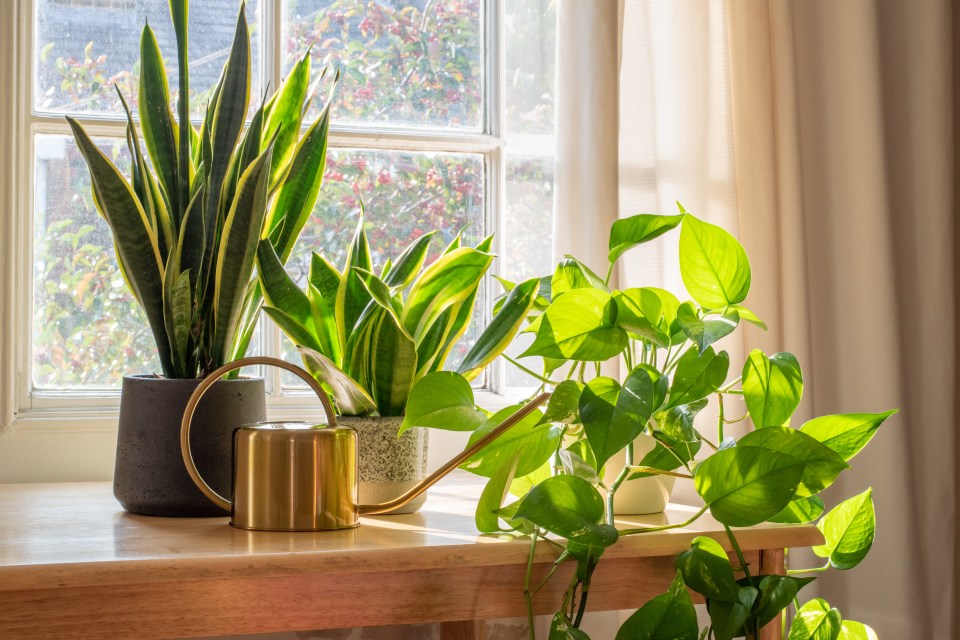A £8 Lidl purchase will prevent damp in your home – it’s just as good as a dehumidifier



If your home has fallen victim to winter damp, Lidl may have just what you need.
Instead of constantly battling with dehumidification filters, this budget purchase gives you a hands-off line of defense against mold.
The Manchester Evening News reported on a plant that can help prevent moisture buildup in your home.
Certain plants are said to suck moisture from the air, preventing condensation from forming in your home.
Lidl shoppers can look forward to Sansevieria Trifasciata, which is currently available for just £7.99.
Also known as snake plant or mother-in-law’s tongue, the plant is said to be nature’s dehumidifier.
They have long, flat, tongue-shaped leaves that grow stiff, upright.
Snake plants thrive in warm conditions with bright filtered light or partially shaded areas.
The low-maintenance plant not only thrives in low light, but also requires minimal watering.
Plant parents only need to add a small amount of water every week.
The RHS guide even describes snake plants as ‘tolerant of neglect’.
It also helps to purify the air of the room it is placed in, removing toxins.
This makes Sansevieria Trifasciata the ideal plant for anyone with allergies.
And if you or someone you know suffers from breathing problems, the snake plant is said to make breathing easier at night.
In addition to placing the item in your bedroom to improve sleep, it would also work wonders in the bathroom.
Because bathrooms are often sensitive to condensation from showers and baths, the plant helps prevent mold formation.
By simply placing a snake plant on your windowsill you can improve the humidity levels in your bathroom.
Cheap Condensation Hacks
1. Use salt or cat litter
– Place bowls of salt or silica-based cat litter in areas that are sensitive to moisture. These materials are excellent at absorbing moisture from the air.
2. DIY dehumidifier
– Make a simple dehumidifier using a plastic container with a lid. Make holes in the lid, fill the container with silica gel or activated carbon and place it in damp areas.
3. Ventilate while cooking and showering
– Open windows or use exhaust fans when cooking or showering to allow moisture to escape. Even a small difference can make a big difference.
4. Wipe Windows clean
– Wipe windows and other cold surfaces regularly with a dry cloth to remove condensation. This prevents moisture from accumulating and causing mold.
5. Use houseplants
– Certain houseplants, such as lilies and spider plants, can help absorb moisture from the air. They also improve indoor air quality.
6. Keep lids on jars
– Keep lids on pots and pans while cooking to reduce the amount of steam released into the air.
7. Dry clothes outside
– If possible, dry clothes outside or in a well-ventilated area, rather than using indoor drying racks.
8. Open curtains and blinds
– Open curtains and blinds during the day to allow sunlight to warm the windows and reduce condensation. Sunlight also helps reduce mold growth.
9. Use towels wisely
– Keep towels and other fabrics away from walls and windows to prevent them from absorbing moisture and becoming damp.
10. Seal cracks and holes
– Use inexpensive weather stripping or caulk to seal any cracks or holes around windows and doors. This helps keep cold air out and warm air in, reducing condensation.
While it may not eliminate existing mold, it does help draw moisture from the air.
The moisture does not hang in the air or settle on surfaces in the room, but is drawn to the plant.
And unlike dehumidifiers, there are no ongoing costs associated with the natural alternative.
It is also more aesthetically pleasing to the eye than a large plastic dehumidifier.
The small installation also takes up less space than the bulky device.






